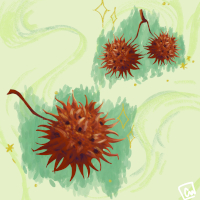Horses were first domesticated on the steppes of Eurasia sometime around 4000BC. Fossil records from the period tell the story. Horse teeth begin to display the wear and tear associated with the use of bits. Human economies and settlement practices show signs of a rapid increase in mobility. The horse becomes a symbol of power in prehistoric art. Horse bones begin to appear in human graves.
Taken together, these changes suggest a much larger transformation, one similar to what occurred on the plains of North America in the late 17th Century. The Cheyenne prophet Sweet Medicine explained the arrival of the horse in apocalyptic terms. Buffalo would disappear from the earth, and beef cattle would arrive to take their place, but between these twinned disasters, a third animal would appear, one with a “shaggy neck and a tail almost touching the ground” whose purpose was to help the tribe to find their way in the world. “Those far hills that seem only a blue vision in the distance take many days to reach,” Sweet Medicine said, “but with this animal you can get there in a short time, so fear him not.”



